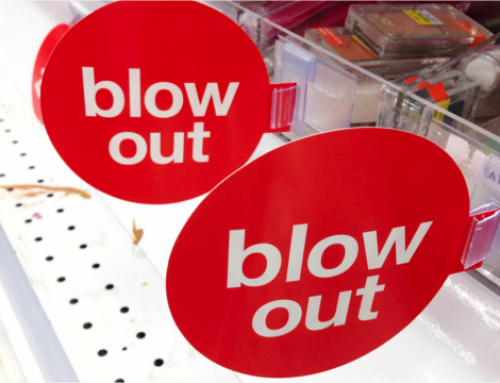I always get a case of “The Giggles” when a reader emails to ask for permission to buy something. That ‘thing’ could be a gadget, some gear, or even a new house. I’m pretty flattered to be the approving source for so many people’s purchases — It’s like I’m the Fairy Blog Mother who approves (or denies) consumerism with the wave of a magic spending wand. Hey, I’m into it.
The problem is I’m more of a blogger and less of a fairy. Also, I don’t own a wand. And being a kind and gentle gal, I tend to feel really really bad when I have to tell a super nice reader, “Hey, I don’t think you can afford it. Save up and buy it later!”
Since I think you’re all pretty smart and really don’t need my approval anyways, I’ve put together a simple chart to help you decide (for yourselves) if buying that thing is a good idea or not. It’s like a magic wand, but with less fairy dust and more flowchart logic. Logic, people — I’m into it.
You can download a letter-sized printable version of Should You Buy It? and stick it on your fridge. If you’re debating the purchase of a new fridge, then this is really the best place to stick this flowchart. It’s like I’m watching you, but not.

How to use the “Should You Buy It?” flowchart
Start by asking yourself a few tough questions. The key is to be honest. The Fairy Blog Mother will know when you’re kidding yourself — she has the technology.
- Do you need it? If you can live without it you likely don’t need it.
- Can you afford it? Paying for it with the cash you have is a good idea. Adding to credit card debt is a bad idea.
- Have you looked at alternatives? Consider competing models, buying used, or finding a seller with a lower price.
- …and this was the best deal? Reconsider the alternatives. Do you need all the fancy features? Can you find a better price? Check out The Definitive Guide: 22 Ways to get a discount on anything.
- Is it high quality? Aim to buy quality items that stand the test of time.
- Does high quality matter? Not high quality doesn’t imply low quality. Spending big bucks on 1,500 Thread Count Egyptian Cotton Sheets is silly when 400 Thread Count Egyptian Cotton Sheets cost less and are quality too.
Be honest with yourself. Save up for needed purchases. And shop around for the best price. Kudos.
Love,
Kerry
(aka ‘Fairy Blog Mother’)





Great flow chart. It’s definitely being printed and placed on the fridge tomorrow 🙂
LOL at your example of the sheets! The expensive “quality” sheet sets take forever to dry on the line, and my line faces a HOT Australian sun where washing can dry in mere hours. As in leaving them overnight because they’re not dry. Fabric and finish matter more in that respect – a fact I wish I’d known before buying those enormously heavy sheets!
Perfect! I always shop like this, and always save up for big purchases. Will use this flow chart with the kids!
As to the quality point: we have a rule that “we’re too poor to buy cheap things.” If we’re going to buy, we’re going to buy something that lasts.
Funny you should mention Egyptian cotton sheets because they were calling my name just this past weekend. I was at HomeSense (just to browse) and I spotted a set (1,000 thread count) in the perfect colour for my bedroom. I thought about it.
It’s not a question of a whether I can afford it – I can, and I would pay with a CC in order to collect Pres. Choice points (because I don’t keep any balance).
I did not buy the set. (I did not buy anything actually, as I said I just went to browse). I thought about it some more over the weekend. I really want to the sheets. But I am not buying them because a) I have enough bed linens and mainly, b) the $100 will be much better sitting in my RRSP than in the store’s account.
A good strategy that I have learned is, when you find something you want, is to take it off the shelf, hold it in your hands during the time you are in the store, and then put it back before you leave. It’s almost as if you owned it – albeit for a short time only. And in fact, you do own it because while you are holding it nobody else can have it. But somehow this makes it easier to part with it without buying it.
Thank you! Great flowchart!
My problem is often:
I want it, I want it, I want it,
I don’t need it,
I want it, I want it,
I don’t need it,
I want it………
Another good point to think about in the “Do I need it” phase is “Am I going to need it.” I did this just before I moved for school and again now that we’re in the process of buying our first home (pre-construction, we’ll be moving in about 2 years). I made a list of the things I know we’re going to need to buy and watch for them to go on sale/clearance (I aim for at least 75% off, if it’s not close to that, I’ll wait). Spreading it out takes the edge off from having to buy it all at once. And I won’t buy anything with a limited warranty too soon.
Super chart! I’ll definitely be pointing my readers towards this post, Kerry.
@Mike: Sometimes quality doesn’t matter. For example, I’m always floored by folks who buy super long-wearing designer clothes for kids under the age of two. They grow so fast that the extra quality is simply money down the drain–you can’t recoup the cost by selling them, and if the kid isn’t the first of many, you won’t get nearly the wear out of them that you should before the kid needs the next size up. In that case, buying a cheaper alternative (or even used) is a better option. Put the money saved in an RESP!
That’s just one example where quality is not the determining factor–there are many more. That’s why that last question is in there.
As for “I want it!” as opposed to “I need it.” If you’re in a place where your budget is balanced and includes an emergency fund and retirement savings, then wanting it MAY be a valid reason for buying. I’d suggest leaving the purchase for a few days, and if you still want it and can pay cash, go for it! But many folks are not in the position where they’re financially stable enough to blow the budget on expensive things they don’t need.
Thank you! I’ll be using this next time I’m fretting over whether to make a purchase. Yay, logic!
We have a 15-month-old son, and although both of us are professionals and can easily afford new clothes and baby gear, we chose to buy used. This meant more money for the RESP and the savings (and for later on, when brand names will mean more to our son!).
We have a similar situation to Tabitha, we bought a house that needs work but is perfectly livable. So there is a long list but nothing is purchased until we find the right deal. There is also a per month limit.
I also use the per month limit on everything else. If this is the month for car maintenance, then putting blinds on the window will wait. The sunblock curtains keep cooling cost low meanwhile.
I like the flow chart but I’ve never been the fan of the “do you need it question”. Need is very subjective and means very different things to different people. As I’m sure you know, there are very few things any of us actually “need” without any doubt. Even you bought a smartphone and you certainly don’t “need” that. Unless you quantify “makes life easier and more convenient” as a need.
I think I would change the first one to “Does it SIGNIFICANTLY improve your life? Are you sure??”.
Need is just so enigmatic…
@Stephen, you’re overcomplicating it. Need is perfectly apt. For example I see a cute pair of shoes for a bargain price and IMMEDIATELY think I “need” them, I need shoes, they’re a great price, what’s the drama? Only I have two other pairs similar and despite the great price, it’s is just a pair of shoes after all. (I had this dilemma just a few weeks ago, they were only $20. The problem was, that was $20 I didn’t, realistically, have.)
Or similarly, you’ve broken something and “need” a replacement. Do you really need a replacement, or do you have something similar that will do the same job? It’s just about being a conscious consumer, not about denying yourself. What you don’t “need” is a new smartphone if you already have one that functions perfectly well. The amazing amount of people who do just that to upgrade to the latest and greatest for what amounts to largely the same thing depresses me, from a financial and environmental POV. (And I say that as someone with a Symbian Nokia “smart” phone, so it’s certainly something I’ve thought about!)
[…] Should You Buy It? A flowchart for smart consumers (includes free printable) ~ @ Squawk Fox […]
@Natalie
I may be overcomplicating it somewhat, but I still don’t agree that need is “apt”. I think the word does exactly what you say it doesn’t and steers people towards denying themselves.
Instead, focusing on how much of a positive difference a purchase will make to your daily life is what’s really important. We can “make do” with a lot of things but if they cause us to exert a lot of extra time and energy because we didn’t “need” the right tool for the job, then we’re just unnecessarily making things difficult for ourselves.
I know that may not be Kerry’s intention and, based on your comment, it probably isn’t yours either. However, I still think the word need evokes that kind of thinking.
If you can afford it and it will make a very positive impact on your life, then go for it after taking the other steps in the flow chart into account!
I’m with Stephan on this one. simply determining if you need something can be extremely subjective and doesn’t address the human behavior behind why you feel the need. After all you can consciously know you don’t need something but feel like you do. I recently read about the stranger test for this, which I really like. Imagine a stranger owns whatever it is you are going to buy. Would you pay them the same price to obtain that object? Imagine you already own the item, what would you be willing to accept in payment to give it up. That can tell you a lot of needs and level of desire.
@Melissa Why should name brands matter in the first place?
Just saying.
Great Flow chart….
[…] If you do buy it, reconsider it. I love following Squawkfox. She always has good posts, such as this flowchart on purchases. Also, wait a month before you buy what you think you need – most of the time […]
Funny buying guide. I like the idea of thinking over what you buy through a flowchart
I used to make fun of my sister for being a couponer but after finding out she saved over $1,200 im no longer laughing. Great post